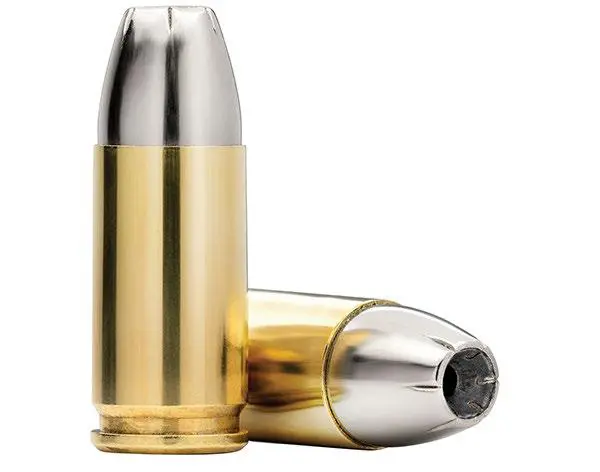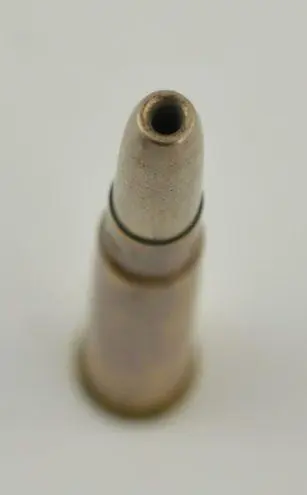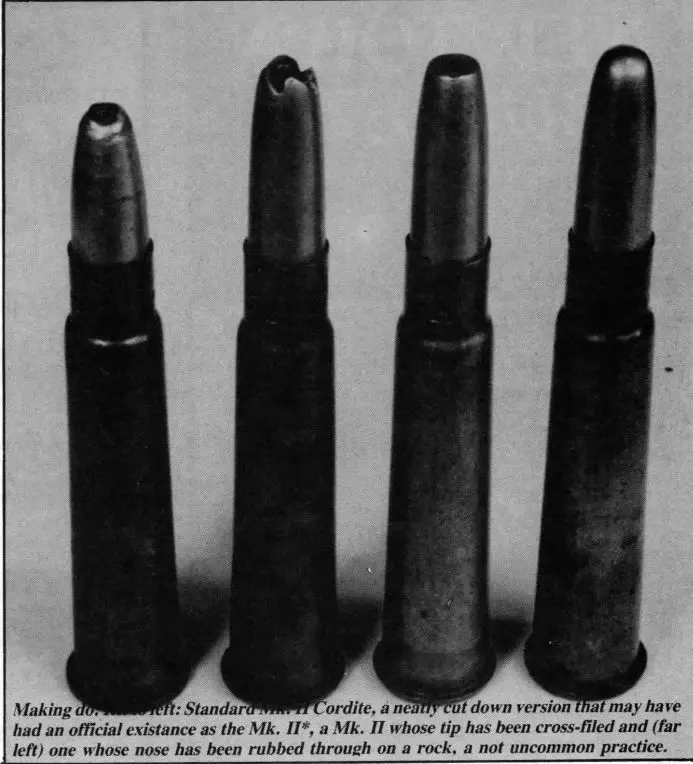History of the Hollow Point Bullet
Tags:
By Heidi Lyn Rao

History of the Hollow Point Bullet
The evolution of the hollow point bullet has a very unique and interesting history. The origins of its design were conceived over three continents, multiple wars, and battlefield ammunition alterations. The late-1800’s European Arms Race was the beginning of the modernization of the world’s superpowers. It was the concept of “stopping power” or “knock- down power” that led to development of the hollow point bullet.
The development of the modern hollow point bullet can be traced back to the South African Zulu War in 1879 between British Forces and the Zulu Kingdom. The British Forces were armed with the .577/450 Martini-Henry rifle. The Martini-Henry was a single shot rifle that fired a round-nosed, .460 caliber lead bullet, with a muzzle velocity of 1,350 feet-per-second and 1,940-foot pounds of energy. This cartridge had incredible “stopping power” and the Zulu tribesmen feared it with good reason. It created a devastating wound with great terminal performance.

The .577/450 Martini-Henry cartridge was not a hollow point and had awesome killing power, so what did this cartridge have to do with hollow point ammunition and its development? It had everything to do with “stopping power” or “knock-down power.” British Forces became accustomed to the great “stopping power” and successes of this rifle and would not be happy with anything less. But the need of a faster, flatter shooting, and higher velocity round and higher capacity weapon to keep up with other European countries compromised the desires of the soldier in the field.

The result was the British Lee-Metford .303 rifle. This rifle was a ten-shot magazine fed rifle that fired a .303 caliber, round-nosed, cupro-nickel jacketed bullet with a muzzle velocity of 2,000 and 2,010-foot pounds of energy. These higher velocities required the projectiles to be jacketed to increase accuracy.

The first real test of this cartridge was the 1895 Chitral Expedition. Chitral is located in Northern British India, near the Afghanistan border. The expedition was to protect the Chitral Fort from a native uprising. There were British troops were armed with the Lee-Metford .303 rifle. These rounds were classified as either the Mark I or Mark II cartridge. Even though the British were victorious, the cartridge itself was a considered inferior to the .577/450 Martini- Henry cartridge used against the Zulu tribesmen.
The soldiers that were accustomed to the effective “stopping power” of the .577/450 cartridge were very disappointed with the “knock-down power” of the Lee-Metford .303 cartridge. The soldiers witnessed Chitral combatants that were shot one or more times continued attacking, often up until the muzzle end of the British defender. Many of the combatants were seen after being shot, leaving the battlefield under their own power. Many combatants later recovered from their wounds to the astonishment of many British military officials.

British military officials needed a new cartridge design that had the velocities of modern (modern for the day) and lighter ammunition. Most of the ammunition used by the British military in Southeast Asia and Africa was manufactured in India. Lt. Colonel Neville Sneyd Bertie- Clay, who made a career in Royal Artillery, spent much of his time at the Indian Ordnance Department. He decided to solve the problem of “knock-down power” in the current military rounds.
In 1896, Lt. Colonel Clay solved the problem of lack of “knock-down power” with the development of the “Dum Dum” bullet. This new bullet was named for the arsenal where it was created. The Dum Dum Arsenal was located near the modern region known as West Bengal, India. The Dum Dum bullet was the first soft-point bullet that allowed for a jacketed bullet to expand or “mushroom” when it hits soft tissue or bone. This is done by leaving the soft lead tip of the bullet exposed. To do this, the hard jacket that surrounds bullet stops before reaching the tip of the projectile. This bullet was classified as the Mark III cartridge.

In 1897, the British military adopted their first cartridges with hollow-point bullets. This round was classified as the Mark IV cartridge. An improved version of the hollow point was developed in 1904 and was classified as the Mark V. The term “Dum Dum bullet” became synonymous with any expanding round. Additionally, up until recently, the term Dum Dum bullet was common among shooters when describing expanding bullets.
The early hollow point cartridges were so effective in stopping a threat, British military officials allowed for their use against Asian and African combatants but considered “too cruel” to use against European threats. The Dum Dum bullet, or expanding bullet, was prohibited for use in warfare and banned by the Hague Convention of 1899. The Dum Dum bullet was still allowed for Law Enforcement, personal protection, and hunting. These projectiles are the predecessors to our modern-day defensive rounds.
Since the Hague Convention of 1899 banned Dum Dum bullets, World War I fell under these rules. Soldiers began to get very creative with the full metal jacketed cartridges issued to them. Even when officers asked for expanding bullets, they were only sent Mark I or Mark II cartridges.
Soldiers created their own Dum Dum bullets from existing cartridges while in the trenches. The simplest way to create a Dum Dum bullet from a full metal jacketed bullet is to carefully pull the bullet out of the cartridge case, spin it around 180 degrees, and reinsert it with the tip inside the case and the base of the projectile facing forward. This is because the jacket of the bullet did not cover the base, leaving the soft lad exposed. Often the base of the projectile was concave, and that acted as a shallow hollow point bullet.
Sometimes, this was referred to as “reversing” a bullet. German infantry men used reversed bullets to penetrate early British tanks. Stormtroopers found it was not possible to penetrate British tanks with their standard 7.92X57 mm Mauser cartridge. Sometimes the reversed bullet would penetrate the tank, striking the enemy within. More often though, the projectile did not penetrate the tank, but hit with such force, the steel plating would dent. This caused steel fragments, called spall, to spray the occupants with metal fragments, similar to a shotgun shell. This would cause the injury of death of the soldiers inside the tank.
Another way soldiers created their own Dum Dum bullets was to remove the tip of their full metal jacketed cartridge. This was done by taking a file and filing about a millimeter to a millimeter and a half from the tip of the bullet. This will remove the outer jacket, exposing the soft lead core, creating a soft-nosed bullet. In some instances, the soldier would insert the tip of a knife, pick, or other small sharp object and remove a small amount of lead, leaving the outer jacket. This created a hollow point projectile that caused massive tissue damage when the bullet struck its intended victim.
To make the filed projectile more lethal, the soldiers cut into the remaining jacket. One way the soldier did this was to cut an “X” in the remaining tip of the projectile. Another method was to deeply score the jacket on the sides of the bullet. This made the jacket weaker, thus allowing for quick deformation when it struck soft tissue.
Next time you do your research when looking for the best defensive cartridge for your particular situation, remember the soldiers who made it possible. Next time you go to the store to purchase another box of ammunition for your carry gun, think of the early successes and failures that made an effective self-defense round. When we look for the best self-defense round, we are really looking for the cartridge that has the best “stopping power” or “knock-down power.”
